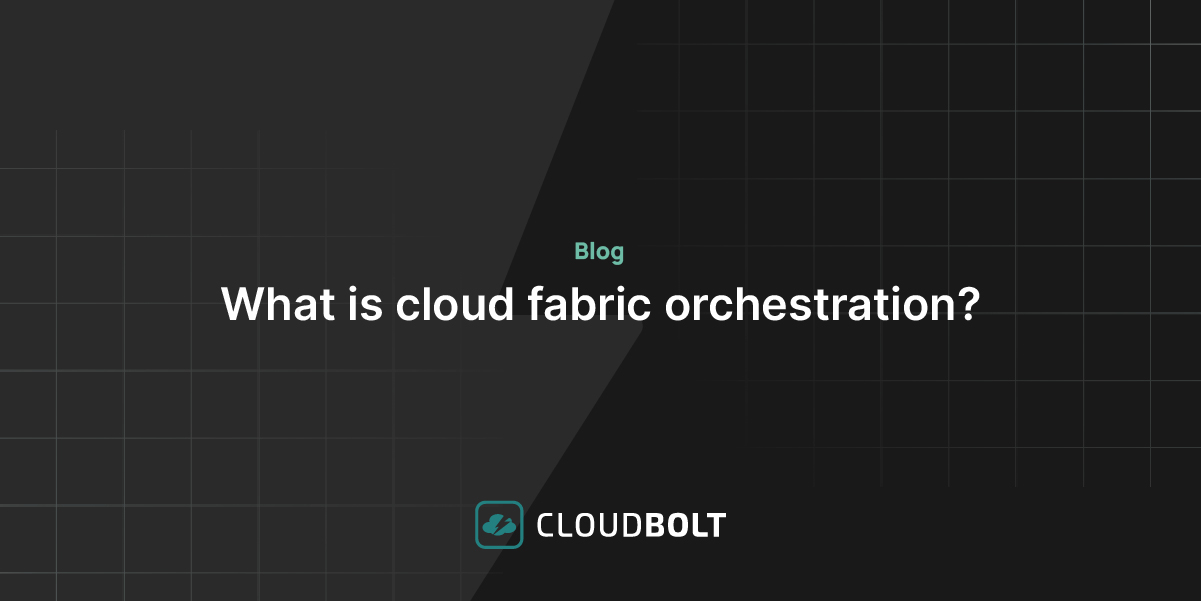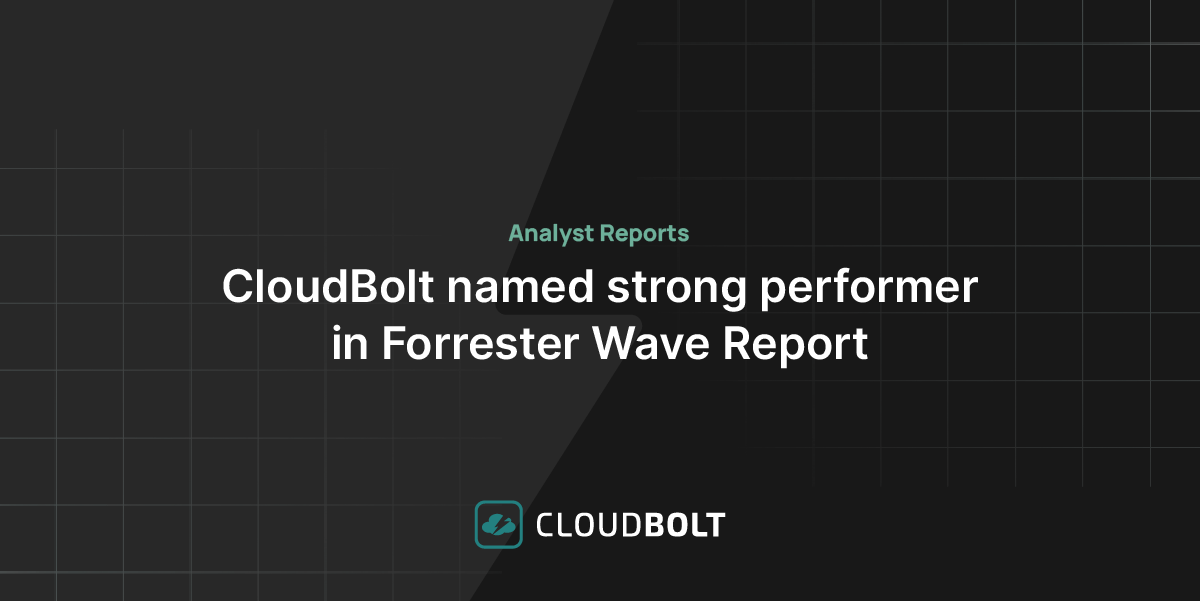What is cloud fabric orchestration

Understanding the Cloud Fabric
The cloud fabric encompasses all the different clouds, services, applications, tools, and threads interweaving to form a cohesive tapestry. It represents the entirety of an organization’s cloud environment, and without a well-defined strategy, this fabric can quickly become unruly, costly, and challenging to manage.
Most companies leverage multiple cloud providers, on-premises servers, and edge devices to run their applications. The absence of proper orchestration renders managing these diverse resources arduous and error-prone. This is where the cloud orchestration fabric acts as the central nervous system that orchestrates interactions between different components, ensuring smooth operation and efficient resource allocation.
Critical Components of Cloud Fabric Orchestration
To fully grasp the power of cloud fabric orchestration, let’s explore its critical components:
- Automation Engine: The automation engine forms the heart of cloud fabric orchestration. It automates repetitive tasks and workflows, eliminating manual intervention and enabling rapid resource provisioning, application deployment, and scaling based on predefined policies and triggers.
- Resource Abstraction Layer: The orchestration fabric abstracts the underlying infrastructure details, allowing administrators to manage resources across disparate cloud environments through a unified interface. This abstraction layer simplifies resource management, regardless of their location or provider, making it easier for IT teams to maintain control over their cloud ecosystem.
- Policy Management: Policies are crucial in governing resource allocation, performance optimization, and security enforcement within the cloud environment. Cloud fabric orchestration ensures consistent and proactive enforcement of these policies across all managed resources, guaranteeing compliance and adherence to best practices.
- Monitoring and Analytics: Real-time monitoring and analytics capabilities empower administrators to gain valuable insights into the performance and health of their cloud infrastructure. By collecting metrics and analyzing data, the orchestration fabric facilitates proactive problem detection and resolution, enabling organizations to optimize their cloud operations and make data-driven decisions.
- Integration Interfaces: Seamless integration with existing tools, platforms, and APIs is paramount for interoperability and compatibility. The orchestration fabric provides standardized interfaces for integration with configuration management tools, CI/CD pipelines, and other ecosystem components, ensuring a cohesive and streamlined cloud environment.
- Self-Service Portal: A user-friendly self-service portal allows stakeholders to request and manage resources autonomously, reducing the burden on IT teams and promoting agility within the organization. This empowers users to take control of their cloud resources, fostering innovation and reducing time-to-market.
- Modern Experience: Legacy data centers and native cloud tools can often be outdated or cumbersome to use, especially when dealing with disparate systems. Cloud fabric orchestration provides a unified, modern, and intuitive user experience, simplifying cloud management and enhancing productivity.
Overcoming Challenges and Misconceptions
While cloud fabric orchestration offers numerous benefits, organizations may face particular challenges and misconceptions during its implementation. One common challenge is the complexity of integrating multiple cloud platforms and ensuring seamless interoperability. To overcome this, choosing an orchestration solution that supports a wide range of cloud providers and offers robust integration capabilities is crucial.
Another misconception is that cloud fabric orchestration is solely about cost reduction. While cost optimization is undoubtedly a benefit, its value lies in the increased agility, flexibility, and innovation it enables. By automating tasks, streamlining processes, and empowering users, organizations can focus on delivering value to their customers and staying ahead of the competition.
Business Benefits
Adopting cloud fabric orchestration brings forth many business benefits that can transform how organizations operate in the cloud. Let’s explore some of these advantages:
- Cost Savings: By optimizing resource utilization and automating tasks, cloud fabric orchestration helps organizations reduce their cloud spend significantly. A recent study by Gartner reveals that organizations can save up to 30% on their cloud costs by implementing effective orchestration strategies.
- Increased Agility: With the ability to rapidly provision resources and deploy applications, organizations can respond swiftly to changing business demands. This agility enables them to seize new opportunities, innovate faster, and stay ahead of the competition. As per a report by McKinsey, companies that adopt cloud orchestration can reduce their time-to-market by up to 50%.
- Enhanced Efficiency: Automating routine tasks and workflows eliminates manual errors and frees up valuable time for IT teams to focus on strategic initiatives. This increased efficiency translates into higher productivity and better resource utilization across the organization.
- Improved Reliability: Cloud fabric orchestration ensures consistent policy enforcement and proactive monitoring, minimizing the risk of downtime and enhancing the overall reliability of the cloud environment. With automated failover and self-healing capabilities, organizations can maintain high availability and deliver uninterrupted services to their customers.
Actionable Tips and Best Practices
To successfully implement and manage cloud fabric orchestration, consider the following actionable tips and best practices:
- Define clear goals: Clearly define your goals and objectives. Identify the specific challenges you aim to address and the outcomes you expect to achieve. This clarity will guide your decision-making process and ensure alignment with business priorities.
- Choose the right tools: Select orchestration tools that align with your organization’s needs and existing technology stack. Look for solutions that offer comprehensive features, extensible integration capabilities, and a user-friendly interface. Consider factors such as scalability, security, and vendor support when choosing.
- Establish governance practices: Implement strong governance practices to ensure consistent policy enforcement and compliance across your cloud environment. Define roles and responsibilities, establish access controls, and regularly audit your orchestration processes to maintain security and adherence to industry standards.
- Foster collaboration: Encourage collaboration between IT teams, developers, and business stakeholders to ensure a smooth adoption of cloud fabric orchestration. Provide training and support to help users understand and leverage the orchestration platform’s capabilities effectively.
- Continuously optimize: Regularly monitor and analyze the performance of your cloud fabric orchestration setup. Identify areas for improvement, fine-tune policies, and optimize resource allocation based on usage patterns and business requirements. Continuous optimization ensures you get the most value out of your cloud investments.
Take the Next Step
Cloud fabric orchestration is not just a technology solution; it is a strategic approach to managing and optimizing your cloud environment. By embracing this powerful framework, organizations can unlock the true potential of the cloud, driving innovation, agility, and cost-efficiency.
If you’re ready to embark on your cloud fabric orchestration journey, we invite you to explore our solutions and take advantage of our expertise. Request a demo today and discover how our platform can help you streamline your cloud operations, reduce costs, and accelerate your digital transformation.
Worried about cloud costs?
Read whitepaper



